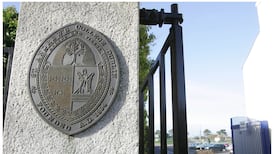China's growth spurt in the first quarter came with a slowdown in inflation, complicating decisions on when and how to further tighten monetary policy.
The economy grew 11.9 per cent from a year earlier, the biggest gain since the second quarter of 2007, the statistics bureau said in Beijing. Consumer prices rose less than economists expected, climbing 2.4 per cent in March.
Within hours of the data, the government announced measures to cool the real-estate market, underscoring concern that asset bubbles may be forming after a record increase in values in March. Economists are split on the likely timing of the nation's first rate increase since 2007, with Royal Bank of Canada predicting one in the next fortnight, while Bank of America- Merrill Lynch sees no move until the fourth quarter.
"There is still no consensus among policy makers on interest-rate hikes and it is a close call whether the central bank can win over the dovish voices," said Wang Qian, chief China economist at JPMorgan Chase. Tightening measures may continue to include loan curbs, reserve requirements for banks and industry-specific measures to cool asset prices, Wang said.
While China doesn't release quarter-on-quarter figures, Royal Bank of Scotland estimated 14.5 per cent economic growth on that basis.
The last time China's growth accelerated to more than 11 per cent, in the first quarter of 2006, the central bank raised rates within a month. China's cabinet on April 14th signaled caution in ending crisis policies, saying first-quarter economic growth was largely driven by stimulus policies and a comparison with low levels in 2009.
After the GDP announcement, the government announced requirements for bigger home down payments and said it will study extra taxes, including on individuals' profits from property sales.





